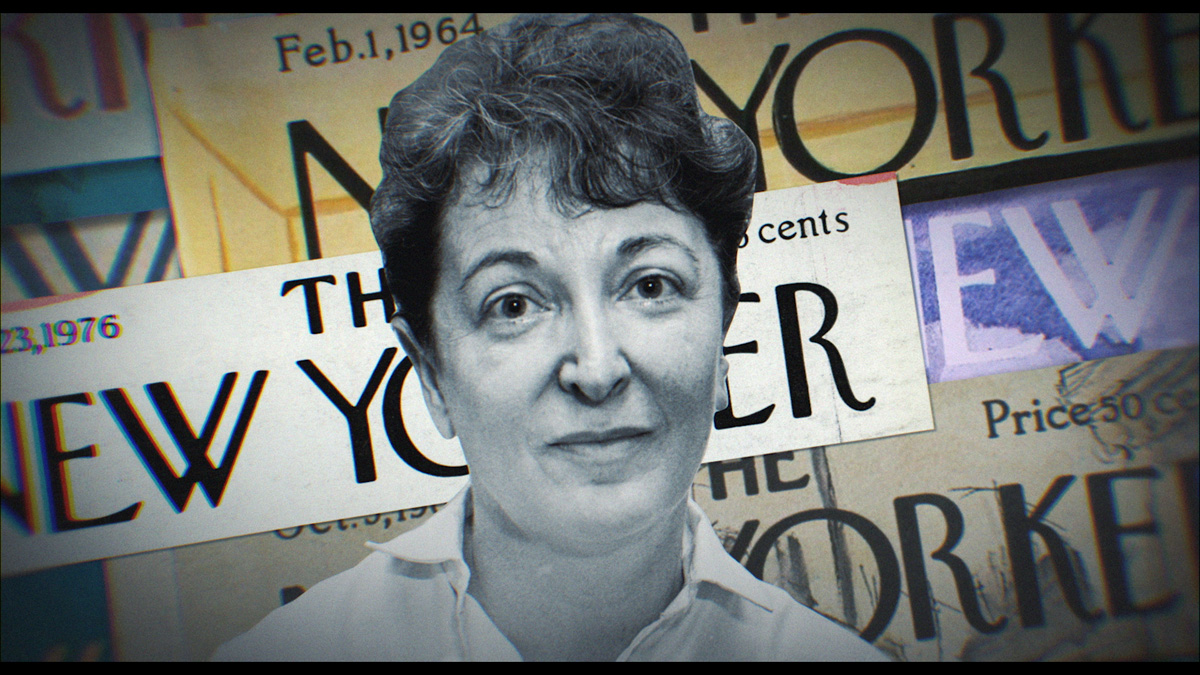
A recent conversation with friend and former Weekly editor in chief Gustavo Arellano bruised my ego when I told him I had never read the writings of Pauline Kael. “She’s canonical,” he said; his tone was as incredulous as it was chastising. “She’s legendary. How can you call yourself a film critic if you’ve never read her work?”
In all honesty, I’ve long veered away from Kael because I was aware of her tendency to be inconsistent in what she praised. In other words, there was just never any real theoretical basis for what she liked. As a person educated in film theory and who enjoys understanding how a film’s visual language helps tell a story or central message, I perceived Kael’s writing to lack a deeper critical analysis, and her simplistic “liked it” or “disliked it” judgement didn’t inspire respect or trust. So I was all shrugs when it came to her; instead, I gravitated toward the likes of Manohla Dargis and J. Hoberman.
That is, until director Rob Garver’s documentary What She Said: The Art of Pauline Kael took me to school. The film is a vast exploration of Kael’s writing and a glimpse at her life and how she became the most hated, well-respected and widely read film critic in the 20th century. The film practically lives in Kael’s head, as we’re treated to numerous voice-over readings of her most famous reviews and excerpts from a few of her seminal books, including I Lost It At the Movies, Kiss Kiss Bang Bang and When the Lights Go Down.
What She Said confirms my main criticism about Kael, as other writers and colleagues interviewed in the film discuss. But it succeeds in winning me over with the immersion into Kael’s fantastic writing style. Yes, she would contradict herself often over the years, but she was honest, direct, conversational, witty, and a natural in making her points poignantly and with conviction. She owned what she said, and even if you didn’t agree with her (which I often didn’t), her writing was infectious enough to keep you interested in everything she had to say.
The film tracks Kael’s early life and failed career as a playwright, then as she bounced among various jobs, including nanny and copywriter, to support herself and her daughter with filmmaker James Broughton, Gina James, whom Kael raised alone. She secured her first film-reviewing gig by arguing with a friend about the Charlie Chaplin film Limelight within earshot of the editor of City Lights magazine at a San Francisco coffeeshop. She eviscerated the film, which pretty much set the tone for her future as a critic. She later secured a writing job with the nationally circulated McCall’s magazine, but she was chased out by reader hate mail after she tore down The Sound of Music.
Kael’s unapologetically contrarian opinions got her in trouble many times, drawing the ire of film directors, other critics (including Andrew Sarris and Renata Adler), the general American public and her editors, among them William Shawn, the longtime editor in chief of The New Yorker, where Kael would end her career with her retirement in 1991.
What She Said makes it clear what movies Kael hated: pompous, self-aggrandizing art-house films from Europe and Hollywood epics. She adored such New Hollywood films as Nashville and Bonnie and Clyde; the films of French New Wave director Jean-Luc Godard; independent, intellectually challenging movies (though she hated Shoah); and trashy, campy schlock. Kael was witness to the changing tides of cinema through the latter half of the 20th century, and it’s equal parts joyful and sensational to experience it through her eyes and hear her incisive commentary on some of the most well-known movies of that time. (Most of her voice-over narrations are recited by Sarah Jessica Parker, while others are by Kael herself from past radio programs and interviews.)
Garver finds a good balance in depicting Kael’s personal and professional lives, as well as some of her human foibles (such as her propensity for making noises and scribbling notes loudly while at the cinema). What She Said places much more focus on her professional life—because her life was the movies. That passion transcended to the printed word and broke out of the monotoned voice of the New York film critic set, offering the masses something they could understand. She changed the game for everyone after her.
It’s easy to take Kael’s influence for granted, but What She Said will hopefully illustrate it for others as it did for me. Though you might not agree with her takes on most movies, her personable writing style will almost always lure you in and give you new appreciation for the form. #Respect.
What She Said: The Art of Pauline Kael screens as part of the Newport Beach Film Festival at Edwards Big Newport 5, 300 Newport Center Dr., Newport Beach, (844) 462-7342; newportbeachfilmfest.com. May 2, 7:45 p.m. $16.
Aimee Murillo is calendar editor and frequently covers film and previously contributed to the OCW’s long-running fashion column, Trendzilla. Don’t ask her what her favorite movie is unless you want to hear her lengthy defense of Showgirls.

